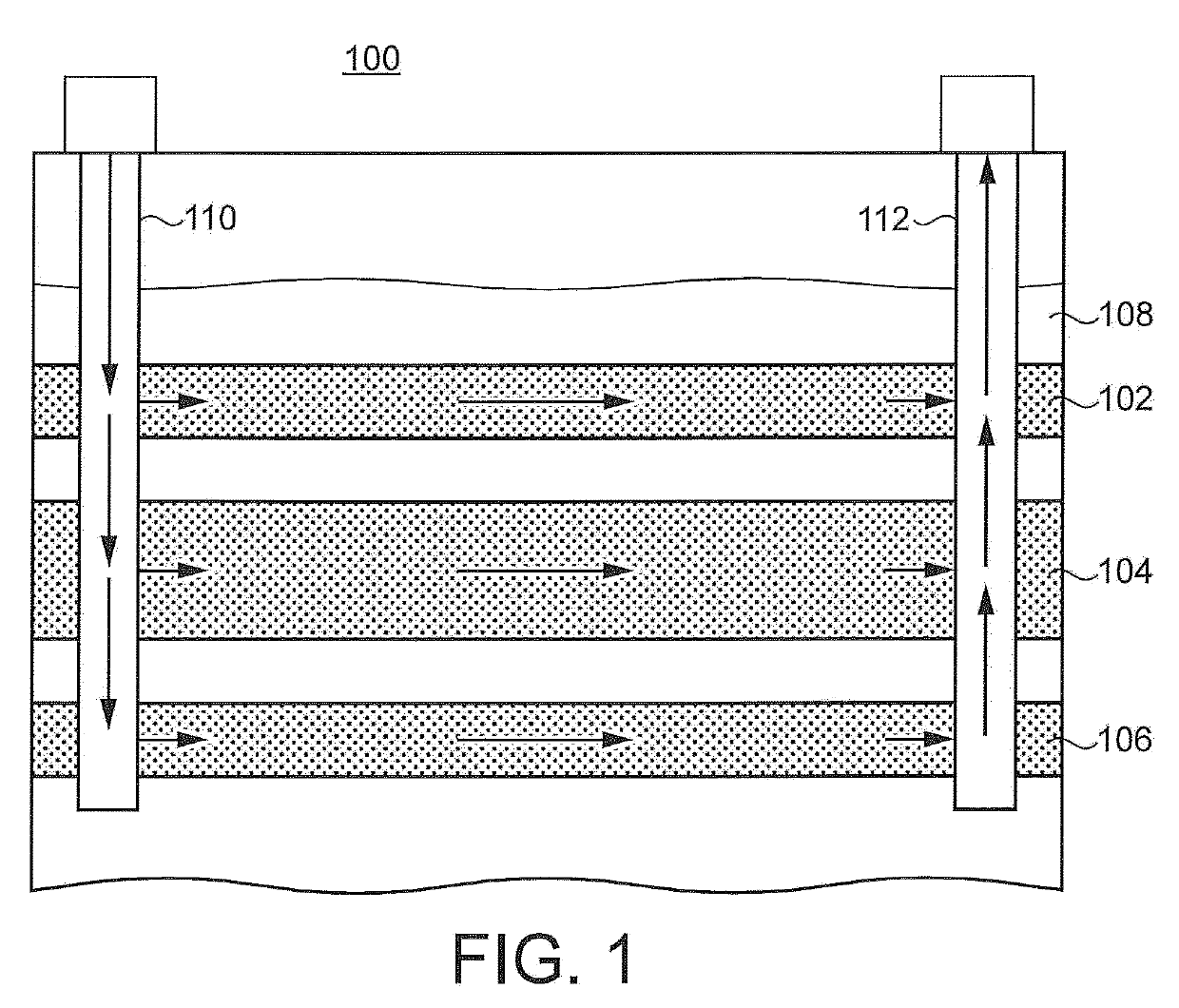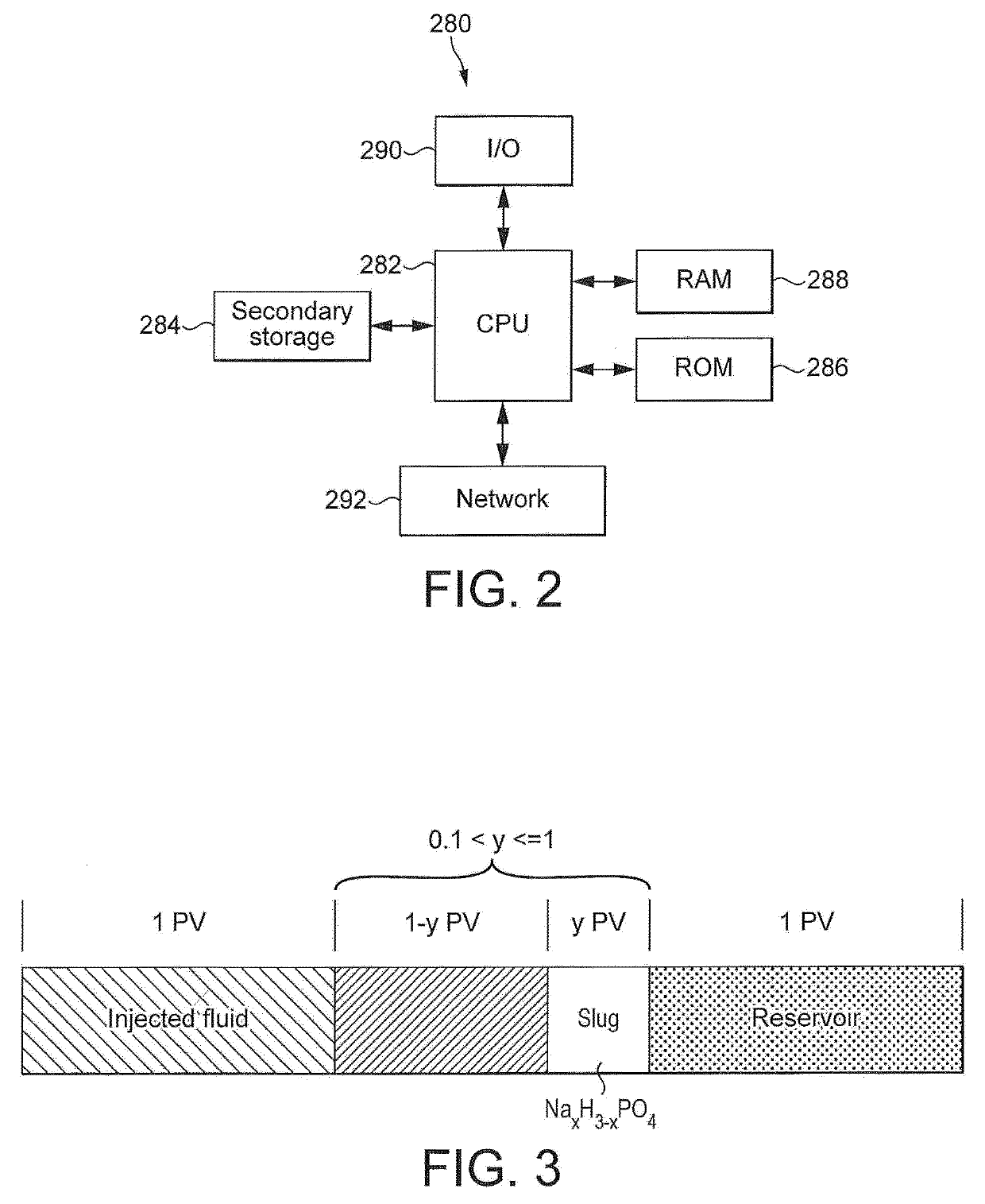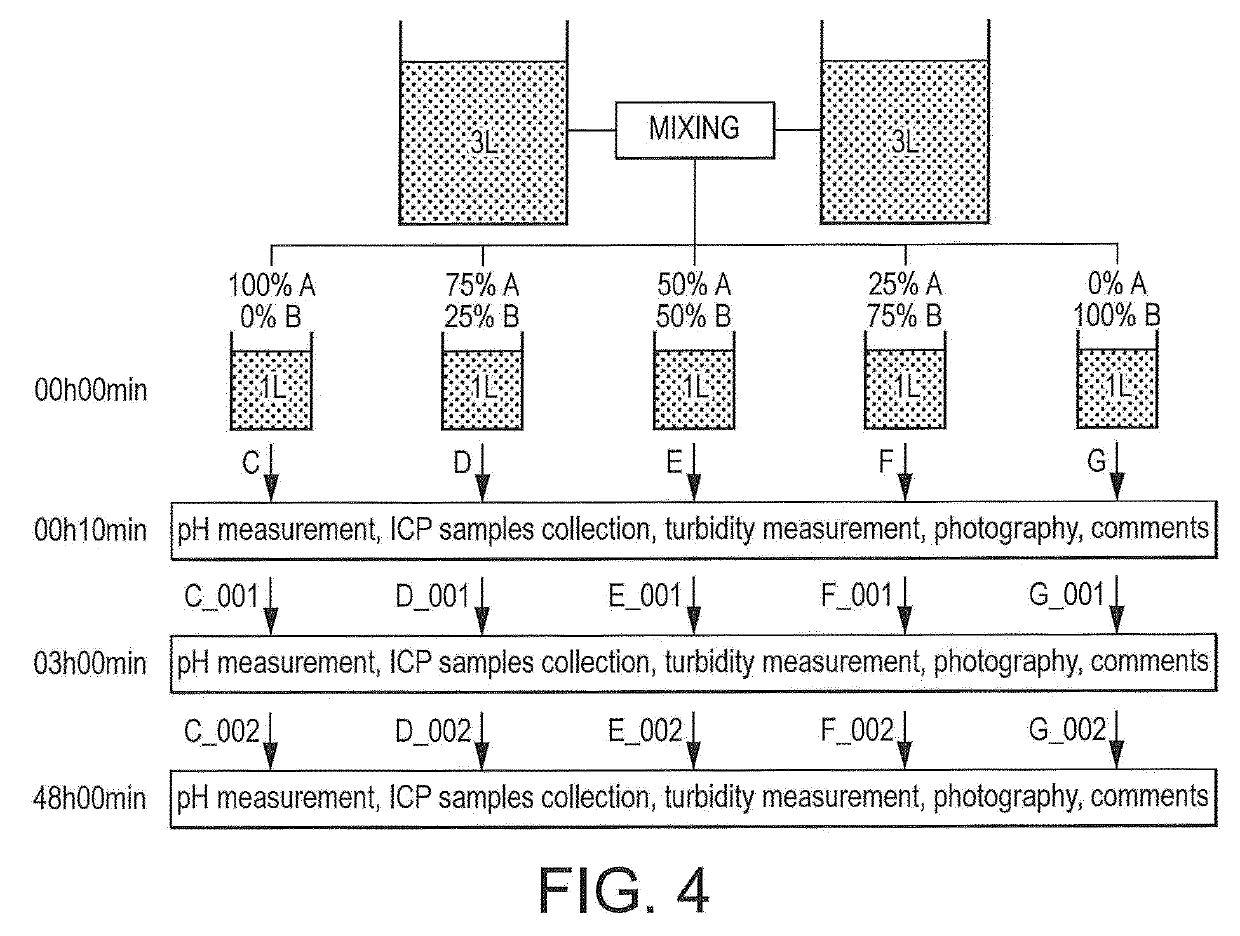Oil Recovery Method
- Summary
- Abstract
- Description
- Claims
- Application Information
AI Technical Summary
Benefits of technology
Problems solved by technology
Method used
Image
Examples
examples
[0100]The disclosure having been generally described, the following examples are given as particular embodiments of the disclosure and to demonstrate the practice and advantages thereof. It is understood that the examples are given by way of illustration and are not intended to limit the specification or the claims in any manner.
[0101]A number of simulations of mixing of an aqueous displacement fluids with resident waters were performed together with precipitation experiments to validate the simulations. The simulations were conducted to study the use of the operating envelope as described herein.
[0102]The simulations were carried out using PHREEQC geochemical modelling software and its one-dimensional transportation mixing module (version 3.2). The injection of various pore volumes (PV) of various aqueous displacement fluids (in the range of 0.001 to 1 PV) into a reservoir comprising various resident waters was modeled using the transportation mixing module (represented typically b...
PUM
 Login to view more
Login to view more Abstract
Description
Claims
Application Information
 Login to view more
Login to view more - R&D Engineer
- R&D Manager
- IP Professional
- Industry Leading Data Capabilities
- Powerful AI technology
- Patent DNA Extraction
Browse by: Latest US Patents, China's latest patents, Technical Efficacy Thesaurus, Application Domain, Technology Topic.
© 2024 PatSnap. All rights reserved.Legal|Privacy policy|Modern Slavery Act Transparency Statement|Sitemap



